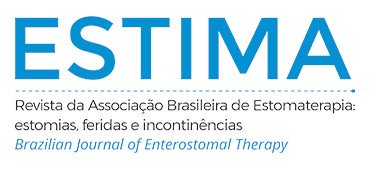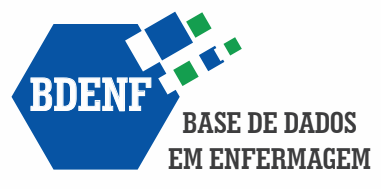TOPICAL USE OF GREEN PROPOLIS FOR WOUND HEALING: A SYSTEMATIC REVIEW OF THE LITERATURE
Abstract
Objective: To systematically identify the effectiveness of the topical use of green propolis in the healing process of surgical wounds. Methods: Systematic review of the literature that considered the publications available in the databases: National Library of Medicine(PubMed/MEDLINE), LatinAmerican and Caribbean Health Sciences Literature (LILACS), The Cumulative Index to Nursing and Allied Health Literature (CINAHL), and Web of Science. The risk of bias of the studies was analyzed using the Systematic Review Centre for Laboratory animal Experimentation (SYRCLE) tool. Results: The four studies analyzed used green propolis for the healing of surgically made lesions. All the selected studies were of experimental methodology, performed with animals. Two studies (50%) used the ethanolic extract of green propolis (at concentrations of 2.4% and 20%) and the other two studies (50%) used the hydroalcoholic extract of green propolis at 5.0%. Conclusion: The results showed that the topical use of formulated products based on green propolis promoted the healing of skin lesions, since it favored angiogenesis, the proliferation of fibroblasts and, consequently, the synthesis and deposition of collagen, as well as showed antimicrobial activity and showed.
Downloads
Metrics
References
Anjum SI, Ullah A, Khan KA, Attaullah M, Khan H, Ali H, Bashir MA, Tahir M, Ansari MJ, Ghramh H, Adgaba N, Dash CK. Composition and functional properties of propolis (bee glue): a review. Saudi Journal of Biological Sciences, 2019; 26(1):1695-1703. https://www.ncbi.nlm.nih.gov/pmc/articles/PMC6864204/
Rojczyk E, Klama-Baryla A, Labus W, Wilemska-Kucharzewska K, Kucharzewski M. Historical and modern research on propolis and its application in wound healing and other fields of medicine and contributions by polish studies. Journal of Ethnopharmacology, 2020; v.262: 113159. https://doi.org/10.1016/j.jep.2020.113159
Chen L, Liu Y, Chen L, Zhang X, Feng F, Zhang F. Determination of phenolic compounds in Chinese poplar propolis, Brazil green propolis and poplar gum by high performance liquid chromatography-quadrupole-time-of-flight mass spectrometry and preliminary study of the identification of adulteration. Chinese, 2019; 37(1): 40-45. https://pubmed.ncbi.nlm.nih.gov/30693708/
Filho ED, Hey A, Dangui AZ, Sanches CGS, David LE, Carraro E, Malfatti CRM, Pereira RA. Estudo comparativo da atividade antimicrobiana in vitro de extratos e óleo essencial de Baccharis dracunculifolia D.C contra Escherichia coli e Staphylococcus aureus. Brazilian Journal of Development, 2021; 7(1): 5830-5848. https://brazilianjournals.com/index.php/BRJD/article/view/23239/18666
Magalhães TV, Lot RFE, Del Carratore CR. Analysis of antibacterial action of propolis and standardization of volumes through antibiogram. UNIMAR Ciências, 2016; Marília-SP, 25(1-2): 38-44.
Oryan A, Alemzadeh E, Moshiri A. Potencial role of propolis in wound healing: biological properties and therapeutic activities. Biomedicine & Pharmacotherapy, 2018; 98(1): 469-483. https://pubmed.ncbi.nlm.nih.gov/29287194/
Takzaree N, Hadjiakhondi A, Hassanzadeh G, Rouini MR, Manayi A. Synergistic Effect of honey and propolis on cutaneous wound healing in rats. Acta Medica Iranica, 2016; 54(4): 233-239. https://acta.tums.ac.ir/index.php/acta/article/view/5023/4774
Batista LLV, Campesatto EA, Assis MLB, Barbosa APF, Grillo LAM, Dornelas CB. Comparative study of topical green and red propolis in the repair of wounds induced rats. Rev Col Bras Cir. 2012;39(6):515-20. https://doi.org/10.1590/S0100-69912012000600012
Moreski DAB, Leite-Mello EVS, Bueno FG. Ação cicatrizante de plantas medicinais: um estudo de revisão. Arq Cienc Saúde UNIPAR. 2018;22(1):63-9. https://doi.org/10.25110/arqsaude.v22i1.2018.6300
Wilkinson HN, Hardman MJ. Wound healing: cellular mechanisms and pathological outcomes. Open Biol., 2020; 10: 200223. http://dx.doi.org/10.1098/rsob.200223
Gomes FP, Galvão NS, Albuquerque AD. Perfil sociodemográfico e clínico dos pacientes com lesões agudas e crônicas em atendimento ambulatorial. REAS/EJCH. 2021;13(2):e5196. https://doi.org/10.25248/reas.e5196.2021
World Union of Wound Healing Societies (WUWHS). Consensus Document. Closed surgical incision management: understanding the role of NPWT. Wounds International, 2016.
Squizatto RH, Braz RM, Lopes AO, Rifaldini BP, Almeida DB, Poletti NAA. Perfil dos usuários atendidos em ambulatório de cuidado com feridas. Cogitare Enferm., 2017; 22(1): 01-09. http://dx.doi.org/10.5380/ce.v22i1.48472
Silva MMP, Aguiar MIF, Rodrigues AB, Miranda MDC, Araújo MAM, Rolim ILTP, Souza AMA. Utilização de nanopartículas no tratamento de feridas: revisão sistemática. Rev Esc Enferm USP, 2017; 51e03272. https://doi.org/10.1590/S1980-220X2016043503272
Vieira CPB, Araújo TME. Prevalence and factors associated with chronic wounds in older adults in primary care. Rev Esc Enferm USP, 2018; 52:e03415. https://doi.org/10.1590/S1980-220X2017051303415
Almondes FME, Zillmer JGV, Porto AR, Soares ER, Herzer DM, Ramos BR. Perfil sociodemográfico-clínico e de lesões cutâneas de internados no programa melhor em casa. Braz. J. of Develop., 2020; 6(10):80049-80064. https://www.brazilianjournals.com/
index.php/BRJD/article/view/18544/14933
Baracho NCV, Oliveira HC, Magalhães IN, Gil BL, Irulegui RSC. Extrato hidroalcoólico de própolis e cicatrização de feridas no diabetes tipo I: estudo experimental. Revista Científica Universitas. 2009; 2(2):1-3. http://revista.fepi.br/revista/index.php/revista/article/view/13/11
Nicoletti MA, Carvalho KC, Junior MAO, Bertasso CC, Caporossi PY, Tavares APL. Popular use of medicines containing drugs from vegetal source and/or medicinal plants: main interactions resulting from that. Rev Saúde. 2010;4(1):25-39. Available at: http://revistas.ung.br/index.php/saude/article/view/371/620
Brasil. Ministério da Saúde. Portaria no 720, de 21 de março de 2018. Inclui novas práticas na Política Nacional de Práticas Integrativas e Complementares – PNPIC. Diário Oficial da União. 2018 mar. 56; seção 1. p. 56.
Moher D, Liberati A, Tetzlaff J, Altman DG et al. Preferred reporting items for systematic reviews and meta-analyses: the PRISMA statement. PLoS Medicine. 2009;6(7):e1000097. https://doi.org/10.1371/journal.pmed.1000097
Prospero. International Prospective Register of Systematic Reviews. https://www.crd.york.ac.uk/prospero/display_record.php?ID=CRD42020187904
Hooijmans CR, Rovers MM, Vries RBM, Leenaars M, Ritskes-Hoitinga M, Langendam MW. SYRCLES’s risk of bias tool for animal studies. BMC Med Res Methodol. 2014;14(43). https://doi.org/10.1186/1471-2288-14-43
Landis JR, Koch GG. The measurement of observer agreement for categorical data. Biometrics. 1977;33(1):159-74. Available at: https://pubmed.ncbi.nlm.nih.gov/843571/
Barud HS, Araújo Júnior AM, Saska S, Mestieri LB, Campos JADB, Freitas RM et al. Antimicrobial brazilian propolis (EPP-AF) containing biocellulose membrane as promising biomaterial for skin wound healing. Evid Based Complement Altern Med. 2013;1-10. https://doi.org/10.1155/2013/703024
Mezadri TJ, Leite M, Staack Júnior MC, Colchon PH, Balan AB, Zanatta ML et al. Evaluation of the contraction of cutaneous wounds in wistar rats treated with Brazilian green propolis gel. Lat Am J Pharm. 2009;28(5):762-7.
Available at: http://www. latamjpharm.org/trabajos/28/5/LAJOP_28_5_1_18_WBSE4OLJIK.pdf
Staak Júnior MC, Colchon PH, Portes AG, Mezadri TJ, Tames DR, Andrade SF. Histological evaluation on brazilian green propolis effect in tissue repair of wistar rats cutaneous wounds. Lat Am J Pharm. 2011;30(2):383-7.
Available at: https://www. researchgate.net/publication/291486356_Histological_evaluation_on_Brazilian_green_propolis_effect_in_tissue_repair_of_wistar_rats_cutaneous_wounds
Santos E, Queirós P, Cardoso D, Cunha M, Apóstolo J. A eficácia das soluções de limpeza para tratamento de feridas: uma revisão sistemática. Revista de Enfermagem Referência, 2016; 4(8): 133-144. http://doi.org/10.12707/RIV16011
Prado ARA, Barreto VPM, Tonini T, Silva AS, Machado WCA. O saber do enfermeiro na indicação de coberturas no cuidado ao cliente com feridas. ESTIMA, Braz. J. Enterostomal Ther., 2016;14(4):175-182. https://doi.org/10.5327/Z1806-3144201600040004
Correa FRS, Schanuel FS, Moura-Nunes N, Monte-Alto-Costa A, Daleprane JB. Brazilian red propolis improves cutaneous wound healing suppressing inflammation-associated transcription factor NFkB. Biomed Pharmacother. 2017;86:162-71. https://doi.org/10.1016/j.biopha.2016.12.018
Hozzein WN, Badr G, Al Ghamdi AA, Sayed A, Al-waili NS, Garraud O. Topical application of propolis enhances cutaneous wound healing by promoting TGF-Beta/Smad-mediated collagen production in a streptozotocin-induced type I diabetic mouse model. Cell Physiol Biochem. 2015;37(3):940-54. https://doi.org/10.1159/000430221
Jacob A, Parolia A, Pau A, Amalraj FD. The effects of Malaysian propolis and Brazilian red propolis on connective tissue fibroblasts in the wound healing process. BMC Complement Altern Med. 2015;15:294-304. https://doi.org/10.1186/s12906-015-0814-1
Bouzahouane H, Ayari A, Guehria I, Riah O. The Propolis: antimicrobial activity and chemical composition analysis. J Microbiol Biotech Food Sci. 2021; e3211. https://doi.org/10.15414/jmbfs.3211
Silva SAO, Martins FS, Silva AS, Ghelen MH, Diaz CMG, Martins ESR. O enfermeiro no diagnóstico e tratamento de biofilmes em feridas. Disciplinarum Scientia, 2018;19(2): 281-90. Available at: https://periodicos.ufn.edu.br/index.php/disciplinarumS/article/view/2512
Downloads
Published
How to Cite
Issue
Section
License
Copyright (c) 2022 Talita Faraj Faria, Roberta Faraj Faria, Ivone Kamada, Lívia Cristina Lira de Sá Barreto

This work is licensed under a Creative Commons Attribution 4.0 International License.

























